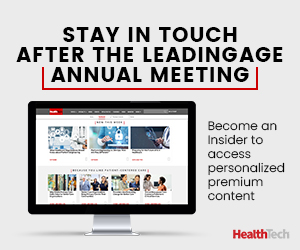Skilled nursing and long-term care organizations are using sensor and remote monitoring as part of their workflow to mitigate staff shortages. Sensors and wearables are also being used in memory care and the assisted and independent living space to provide a more proactive approach to care and wellness. Remote patient monitoring and remote treatment monitoring are continuing to expand in post-acute and senior living organizations. RPM and RTM not only provide a more proactive approach to care and wellness but also can be an additional revenue source for operators. However, there are specific requirements that must be met. Telehealth.HHS.gov provides resources for operators and providers considering RPM and RTM. CDW also has resources and partners available to assist organizations with planning and implementing RPM and RTM services and deciding which solution will work best with current systems.
As healthcare continues to move toward value-based care, being proactive rather than reactive in providing care is vital. This is where AI can assist, in addition to automating rote tasks for administrative and clinical staff.
If senior living and post-acute care organizations want to better attract residents and clinicians while staying on the cutting edge of care, they need to understand how to implement innovative technology and ensure that their IT infrastructure can support innovation. This is a big focus of CDW’s at the LeadingAge Annual Meeting this year.
DISCOVER: These tips can help senior care organizations navigate innovation and AI.
Preparing Senior Living and Post-Acute Care Organizations for Innovation
There are varying levels of preparedness for AI adoption in the senior living and post-acute care space. Many organizations are still in the very early stages of implementing AI-driven solutions, and there are several factors that contribute to that, including technological infrastructure, workforce readiness, regulatory frameworks and cost considerations.
While AI is a huge buzzword right now, I see it as a great opportunity to improve efficiencies and workflows. However, it’s important to start with the basics.
To prepare, organizations need to remember that adopting AI and other emerging technologies should not be just an IT initiative but should include leadership and frontline care staff as well. At CDW, we recommend that customers starting this journey approach it through our “pillars of care” model, which entails the foundations of care, optimizing care and the future of care.
In the foundational stage, organizations should assess their network infrastructure, the devices they have and what that supply looks like, data storage, security and reporting structures. All of these are foundational to the organization’s IT environment, and the organization’s leadership needs to ensure everything is in check before moving to the next step.
Click the banner below for exclusive content when you become an Insider.














